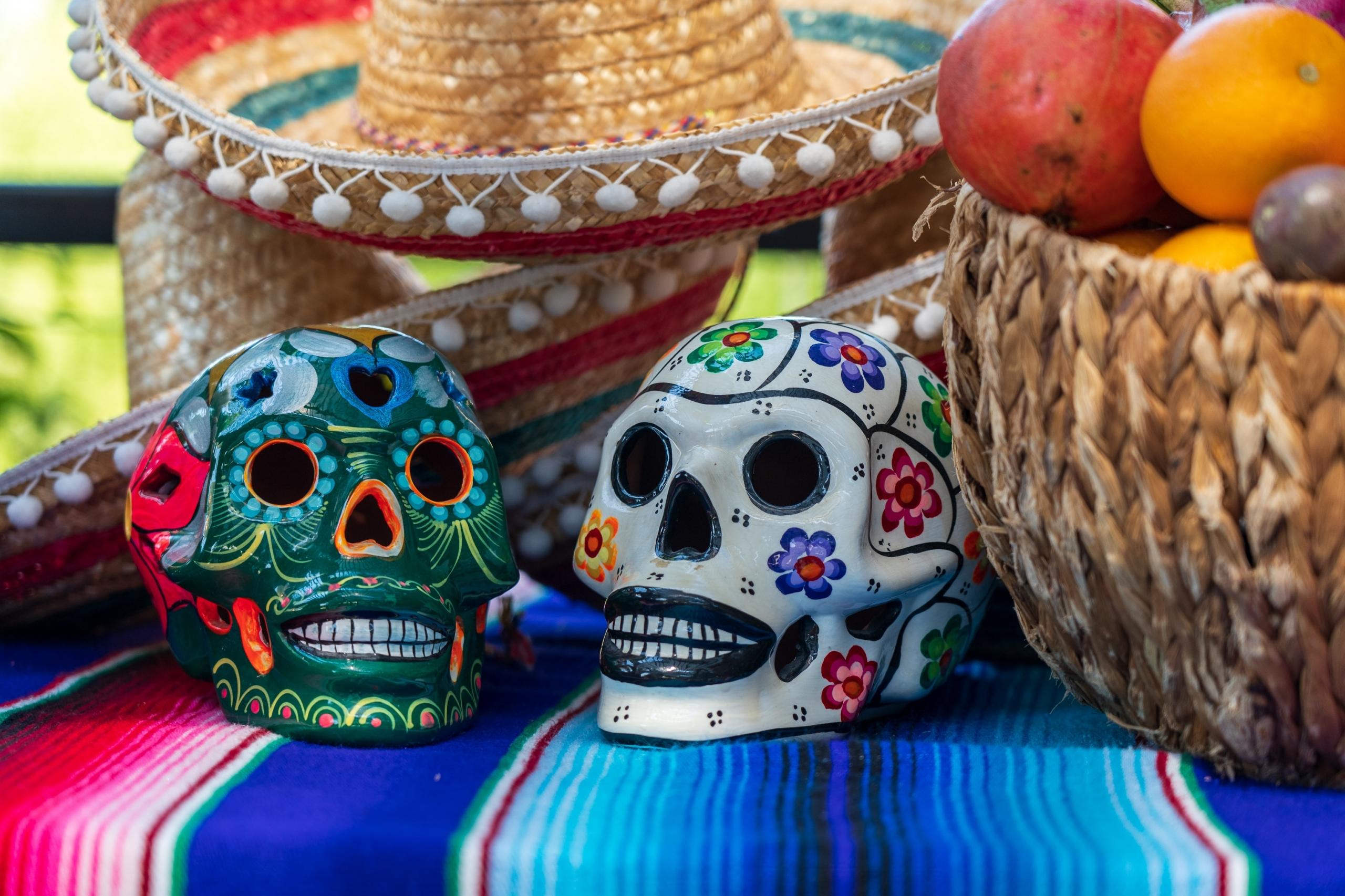Learning basic greetings in Spanish is a great way to start your journey into the beautiful world of the Spanish language. Whether you're planning a trip to a Spanish-speaking country or just want to connect with Spanish speakers, mastering these essential greetings and goodbyes will help you communicate more effectively.
In this article you will learn to say hello correctly, all the days of the week, to say sorry, to say please and thank you and a lot of other useful phrases in Spanish.
The perfect guide for those who want to be able to communicate with Spanish speakers.

Spanish Greetings and Responses
Let's start with the basics:
- Hola (Hello): The most common way to greet someone in Spanish is by saying "Hola." This simple word is used to say hello to friends, family, or even strangers. It's a friendly and welcoming way to start a conversation.Example: Hola, ¿cómo estás? (Hello, how are you?)
- Buenos días (Good morning): If it's the morning, you can use "Buenos días" to wish someone a good morning. It's a polite and culturally appropriate way to greet people in the early part of the day.Example: Buenos días, ¿cómo va tu día? (Good morning, how is your day going?)
- Buenas tardes (Good afternoon): As the day progresses, you can switch to "Buenas tardes" to greet someone in the afternoon. This is a respectful way to acknowledge the time of day and initiate a conversation.Example: Buenas tardes, ¿qué tal estás? (Good afternoon, how are you?)

- Buenas noches (Good evening/night): When it's nighttime or you're meeting someone in the evening, saying "Buenas noches" is the appropriate greeting. It's a warm way to wish someone a good evening or night.Example: Buenas noches, que descanses (Good evening, rest well).
- Adiós (Goodbye): Saying goodbye is just as important as saying hello. "Adiós" is a common way to bid farewell to someone. It's a versatile term that can be used in both formal and informal settings.Example: Adiós, nos vemos pronto (Goodbye, see you soon).
- Hasta luego (See you later): If you plan to meet the person again, you can use "Hasta luego" to say goodbye with the intention of seeing them again. It's a friendly way to part ways temporarily.Example: Hasta luego, que tengas un buen día (See you later, have a good day).
- Hasta mañana (See you tomorrow): When you know you'll see someone the next day, "Hasta mañana" is a fitting way to say goodbye. It expresses the anticipation of meeting again soon.Example: Hasta mañana, cuídate (See you tomorrow, take care).
Saying "Please" and "Thank You" in Spanish
In the rich tapestry of language, courtesy is a crucial thread that binds cultures together. Spanish, with its diverse expressions, places significant importance on politeness. This article explores the art of courtesy in Spanish, focusing on the expressions "Por favor" (Please) and "Gracias" (Thank You).
"Por Favor" - Making Requests and Seeking Assistance:
The phrase "Por favor" is a versatile and polite way to make requests or seek assistance in Spanish. It softens the tone when seeking help, requesting a favor, ordering at a restaurant, making a polite inquiry, or expressing gratitude in advance. For instance, when lost in a new city, you might say, "¿Puedes ayudarme, por favor?" (Can you help me, please?). Adding "por favor" shows respect for the other person's time and willingness to help.

"Gracias" - Expressing Gratitude:
"Gracias" is a powerful expression used to convey gratitude in various situations. Whether receiving assistance, a gift, or experiencing kindness, saying "gracias" acknowledges efforts and shows genuine appreciation. For example, "¡Gracias por tu ayuda!" (Thank you for your help!) expresses gratitude for assistance in a task.
Understanding when to use "gracias" and "por favor" is essential for effective communication. "Gracias" is employed when expressing gratitude or acknowledging something positive, while "por favor" is used when making requests or seeking assistance. Balancing both expressions in a conversation demonstrates a nuanced understanding and allows for graceful navigation of social interactions.

When and How to Say "Sorry" in Spanish
Apologizing is a universal aspect of effective communication, and understanding how to express remorse in different languages is invaluable. In this article, we delve into the nuances of saying "Sorry" in Spanish, exploring when and how to apologize. Additionally, we present five distinct ways to express regret, shedding light on the cultural benefits of learning Spanish with a tutor.
The most common and versatile expression for apologizing is "Lo siento," a phrase suitable for a broad spectrum of situations, from minor inconveniences to more serious mistakes.
5 Ways to Say Sorry in Spanish
While "Lo siento" is the go-to expression, Spanish offers other phrases to cater to different contexts and levels of formality:
- Perdón: A more formal apology, suitable for significant errors or seeking forgiveness in professional settings.
- Disculpa: A polite and friendly way to apologize for minor mishaps or inconveniences, maintaining a level of politeness.
- Mis disculpas: A formal and elaborate expression suitable for situations requiring a deeper acknowledgment of the mistake.
- Lo lamento: Conveys profound and sincere remorse, appropriate for situations where a heartfelt apology is necessary.
Elevate Your Spanish Conversations with Common Phrases
Learning Spanish opens doors to rich cultural experiences and connections. To enhance your conversational skills, this article explores common Spanish phrases. Divided into categories, these phrases cover greetings, everyday conversations, asking for directions, ordering at restaurants, and expressing emotions.
Greetings and Pleasantries: Establishing a positive tone is crucial in Spanish conversations. Common phrases include:
- ¡Hola! (Hello!): A universal greeting suitable for any time of day.
- ¿Cómo estás? (How are you?): Shows genuine interest in someone's well-being.
- Buenas días/tardes/noches (Good morning/afternoon/evening): Time-specific greetings for different parts of the day.
- Mucho gusto (Nice to meet you): Expresses pleasure and courtesy when meeting someone.
- ¿Qué tal? (How's it going?): A casual and friendly inquiry suitable for friends and acquaintances.

Everyday Conversations: Politeness and consideration enrich everyday conversations. Common phrases include:
- Por favor (Please): Essential for making requests or asking for something politely.
- Gracias (Thank you): Universal expression of gratitude.
- De nada (You're welcome): A customary response to expressions of gratitude.
- Perdón/Disculpe (Excuse me): Polite ways to say "excuse me."
- Lo siento (I'm sorry): Used when offering an apology.
Asking for Directions: Navigating new places is made easier with these phrases:
- ¿Dónde está...? (Where is...?): For specific locations.
- ¿Cómo llego a...? (How do I get to...?): For guidance on reaching a destination.
- ¿Hay un/a... cerca de aquí? (Is there a... near here?): For general categories like restaurants, pharmacies, or hotels.
Ordering at Restaurants: Enhance your dining experience with these phrases:
- La carta, por favor (The menu, please): Politely requests the menu.
- Quisiera pedir... (I would like to order...): Expresses your order.
- ¿Qué recomienda? (What do you recommend?): Seeks recommendations from the waiter.
- La cuenta, por favor (The check, please): Signals the end of the meal and requests the bill.
Mastering these common Spanish phrases is essential for becoming a proficient communicator. Whether traveling, making friends, or immersing yourself in Spanish-speaking cultures, these phrases serve as your linguistic passport.
Spanish Days of the Week: A Cultural Journey
This exploration of the days of the week in Spanish provides more than just a list of names; it delves into the cultural richness behind each day. From Monday's start of the workweek to Sunday's religious and family connections, these names offer insights into Spanish-speaking cultures.
The Days of the Week in Spanish:
The journey through the days begins with "Lunes" (Monday), signifying the workweek's commencement and linked to the moon. Moving through "Martes" (Tuesday), associated with the Roman god of war, and "Miércoles" (Wednesday), rooted in balance, each day has a unique story. "Jueves" (Thursday) pays homage to Jupiter, symbolizing growth, while "Viernes" (Friday), named after Venus, marks the joyful end of the workweek. "Sábado" (Saturday) represents a day of rest, and "Domingo" (Sunday) concludes the week with religious significance.

Cultural Significance:
The cultural importance of these days is highlighted through Sundays ("Domingo"), often reserved for religious observances and family gatherings. The day's name, rooted in the Latin "Dominicus," reflects a deep connection to spirituality and family values. The association of Sundays with rest, worship, and family time showcases the broader cultural values embedded in the language.
Historical Connections:
Days like Thursday ("Jueves") trace their roots to Roman mythology, with the name originating from "Jovis dies," meaning the day of Jupiter. This historical influence emphasizes the enduring impact of ancient civilizations on linguistic development, shaping the Spanish language.
Celestial Influences:
The Spanish language weaves celestial influences into its days, connecting Monday ("Lunes") with the moon ("Luna"). This tradition, rooted in ancient times, adds a touch of mystery and beauty to the language, symbolizing new beginnings.
A week in Spanish-speaking countries follows a pattern of work, leisure, and cultural practices. The workweek spans from Monday to Friday, with Saturdays and Sundays designated for leisure and family time. Meal times, including "desayuno," "almuerzo," and "cena," reflect the cultural significance of shared meals. Additionally, the practice of a siesta and religious observances on Sundays contribute to the diverse and dynamic nature of a typical week.
Mastering basic Spanish greetings, to apologise, saying plese and thank you and common phrases is a fantastic starting point for anyone interested in connecting with Spanish speakers. Whether you're traveling, making new friends, or simply expanding your language skills, these simple phrases will go a long way in making your interactions more enjoyable and meaningful.
So, ¡hola y adiós to a world of new connections and experiences!
























